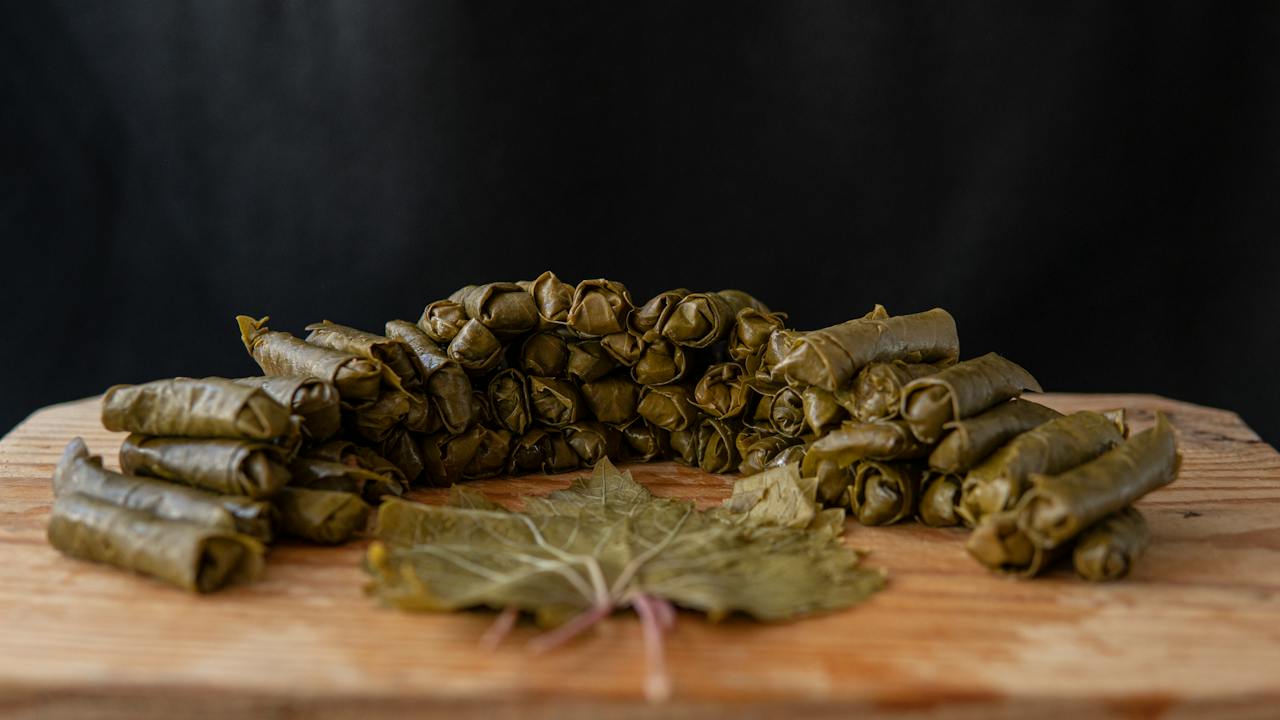The Balkan region, with its rich history and diverse cultural influences, boasts a culinary scene that is as vibrant as it is flavorful. From the hearty meats to the fresh vegetables, Balkan cuisine is a delightful fusion of Mediterranean, Ottoman, and Eastern European flavors. In this blog post, we will explore the etiquette of indulging in Balkan cuisine and highlight some must-try dishes that will transport your taste buds to this enchanting part of the world.
Balkan Dining Etiquette
Before delving into the culinary delights, it’s essential to understand the dining etiquette prevalent in the Balkan region. Meals here are often a communal affair, with families and friends gathering around a table to share in the joy of good food and conversation. Here are some key points to keep in mind:
- Cheers! – In Balkan countries, toasting is a cherished tradition. Whether it’s with a glass of rakija in Serbia or a glass of red wine in Croatia, be sure to make eye contact and clink glasses with everyone at the table.
- Bread is Sacred – Bread is a symbol of hospitality in the Balkans. It’s considered impolite to waste it, so try not to leave any bread on your plate. You can also use it to mop up delicious sauces from your main dish.
- Meze, Meze, Meze – Meze, or small appetizers, are a staple in Balkan cuisine. Don’t be shy to indulge in these flavorful bites before the main course arrives.
- Slow Down and Savor – Balkan meals are meant to be enjoyed leisurely. Take your time, engage in conversation, and savor each bite. Rushing through a meal is not the Balkan way.
Must-Try Balkan Dishes
- Ćevapi (Serbia, Bosnia, Croatia): These small, grilled minced meat sausages, typically made from a mix of beef and pork, are a beloved Balkan dish. Served with somun (flatbread) and often accompanied by chopped onions and a red pepper-based condiment called ajvar, Ćevapi is a must-try for meat lovers.
- Burek (Bosnia, Serbia, Montenegro): A flaky pastry filled with minced meat, cheese, or spinach, Burek is a popular snack or breakfast item in the Balkans. Enjoy it with a side of yogurt for an authentic experience.
- Moussaka (Greece): While technically not exclusively Balkan, Moussaka is a delightful casserole dish made with layers of eggplant, minced meat, and béchamel sauce. It’s a comforting dish that showcases the region’s diverse culinary influences.
- Pljeskavica (Serbia): Often referred to as a Serbian hamburger, Pljeskavica is a grilled ground meat patty, typically made with a mix of beef and pork. It’s served in a flatbread with various toppings and is a favorite street food item.
- Sogan-dolma (Bulgaria): Stuffed onions with minced meat and rice, Sogan-dolma is a traditional Bulgarian dish. The onions are typically slow-cooked until tender, creating a dish that bursts with savory flavors.
- Gibanica (Serbia): This delectable pastry is a true Balkan gem. Gibanica is made by layering paper-thin sheets of dough with a filling that typically includes a combination of cheese, eggs, and sometimes spinach. The result is a savory, flaky delight that’s perfect for breakfast or as a snack during a leisurely afternoon.
- Ajvar (Macedonia, Serbia): While not a main dish per se, Ajvar is a condiment that deserves a special mention. This pepper-based delight is made by roasting red peppers and eggplants, then blending them into a smooth, flavorful spread. Ajvar is often enjoyed with bread, meats, or as a delicious addition to various dishes, adding a burst of smoky sweetness.
- Pasticada (Croatia): A traditional Dalmatian dish, Pasticada is a slow-cooked beef pot roast marinated in red wine, garlic, and various spices. It’s typically served with gnocchi or a type of pasta called njoki. The result is a tender and succulent dish that reflects the region’s emphasis on slow-cooking and bold flavors.
- Tarator (Bulgaria): Especially refreshing during the warmer months, Tarator is a cold soup made from yogurt, cucumbers, garlic, and dill. This light and tangy dish showcase the Balkan commitment to using fresh, local ingredients. It’s a delightful starter or a cooling side dish that perfectly complements heartier mains.
- Rakija (Various Balkan countries): No exploration of Balkan cuisine would be complete without mentioning Rakija. This strong fruit brandy, often made from plums or grapes, is a staple in the region. Whether you’re offered a shot as a gesture of hospitality or you choose to sip it slowly, Rakija is a traditional drink that plays a significant role in Balkan social gatherings.
- Pite (Albania): Pite is a traditional Albanian dish that involves layers of thin dough filled with various ingredients such as meat, cheese, or vegetables. The layers are carefully stacked, creating a delightful combination of textures and flavors. This savory pie is often enjoyed as a main course or a satisfying snack.
- Begova čorba (Bosnia and Herzegovina): Translating to “Bey’s soup,” this rich and velvety dish is a symbol of Ottoman influence in Balkan cuisine. Begova čorba typically consists of chicken, okra, carrots, and other vegetables, all simmered to perfection. It’s a hearty soup that reflects the historical connections between the Balkans and the Ottoman Empire.
- Soutzouk Loukoum (Greece): While not a savory dish, Soutzouk Loukoum is a sweet treat that’s too delicious to ignore. These Turkish-inspired sweets, also known as Turkish Delight, consist of gel-like confections flavored with various ingredients such as rosewater, citrus, or nuts. A delightful way to end a meal or enjoy with a cup of strong coffee.
- Japrak (Montenegro): Japrak consists of grape leaves stuffed with a mixture of ground meat, rice, and aromatic herbs. This dish showcases the region’s fondness for using grape leaves in cooking, creating a flavorful and satisfying combination. Japrak is often served with a dollop of yogurt, enhancing the overall taste experience.
- Tavče Gravče (North Macedonia): This traditional Macedonian dish is a hearty bean casserole featuring beans cooked with red pepper, onion, and various spices. Tavče Gravče is often enjoyed as a main course and is a staple in Macedonian households. It perfectly captures the essence of Balkan comfort food, showcasing simple yet robust flavors.
- Kaimak (Serbia): A dairy lover’s delight, Kaimak is a creamy, rich dairy product often likened to clotted cream. It is typically served with bread, honey, or jam and is a popular breakfast or snack option. Indulge in the velvety texture and subtle sweetness of Kaimak for a truly authentic Serbian experience.
- Rustic Peka (Croatia, Montenegro): Peka is a traditional Balkan method of slow-cooking, often done under a metal bell or a terracotta lid. Meats, vegetables, and herbs are combined and slow-cooked to perfection, resulting in tender and flavorful dishes. Peka showcases the region’s love for slow-cooked, rustic fare, providing a unique and unforgettable dining experience.
- Dolma (Greece, Turkey): While variations of Dolma are found throughout the Mediterranean and Middle East, the Balkan region has its own take on this beloved dish. Grape leaves are stuffed with a mixture of rice, pine nuts, and aromatic herbs, creating a delightful combination of flavors. Dolma is often served as an appetizer or a side dish, showcasing the influence of Ottoman cuisine in the region.
- Sataraš (Serbia, Croatia): A colorful and vibrant dish, Sataraš is a stew made with bell peppers, tomatoes, onions, and sometimes eggplant. It’s a celebration of fresh vegetables and bold spices, creating a medley of flavors that can be enjoyed as a standalone dish or as a complement to grilled meats.
- Popara (Bosnia and Herzegovina): Popara is a traditional Balkan dish that transforms stale bread into a comforting porridge. The bread is soaked in water or milk and then flavored with ingredients like cheese, garlic, or olive oil. It’s a testament to the resourcefulness of Balkan cuisine, turning humble ingredients into a satisfying and flavorful meal.
- Karađorđeva šnicla (Serbia): Named after the Serbian national hero Karađorđe Petrović, this dish is a breaded and fried meat cutlet stuffed with kajmak (a creamy dairy product similar to clotted cream) and ham. It’s a hearty and indulgent dish that reflects the Serbian love for robust flavors and generous portions.
- Gjellë me Arra (Albania): This Albanian dish features slow-cooked meat, often lamb or goat, simmered with walnuts and a mix of aromatic spices. The result is a savory and nutty stew that exemplifies the hearty and comforting nature of Albanian cuisine.
- Tarama (Greece): Tarama is a creamy fish roe spread that is a staple in Greek cuisine. Served as a dip with bread or crackers, Tarama offers a unique and briny flavor. It’s a popular meze option, perfect for sharing and savoring during social gatherings.
- Paprikaš (Hungary, Serbia, Croatia): While the origins of Paprikaš are debated, it has become a beloved dish in the Balkans. This stew, often made with chicken or pork, features a rich and flavorful sauce made with paprika, tomatoes, and various spices. It’s typically served with noodles or dumplings, creating a satisfying and hearty meal.
- Lamb Kleftiko (Greece): This Greek dish involves slow-cooking lamb with garlic, lemon, and Mediterranean herbs. The result is tender, flavorful meat that falls off the bone. Kleftiko is often cooked in a sealed clay pot, allowing the flavors to intensify and create a truly memorable dining experience.
As you embark on your culinary exploration of Balkan cuisine, these dishes offer a broader perspective on the region’s diverse flavors and culinary traditions. From hearty stews to delicate spreads, the Balkans continue to surprise and delight with their rich gastronomic tapestry. So, embrace the variety, try new dishes, and let the vibrant flavors of the Balkans transport you to a world of culinary delights.
Bon Appetit!




